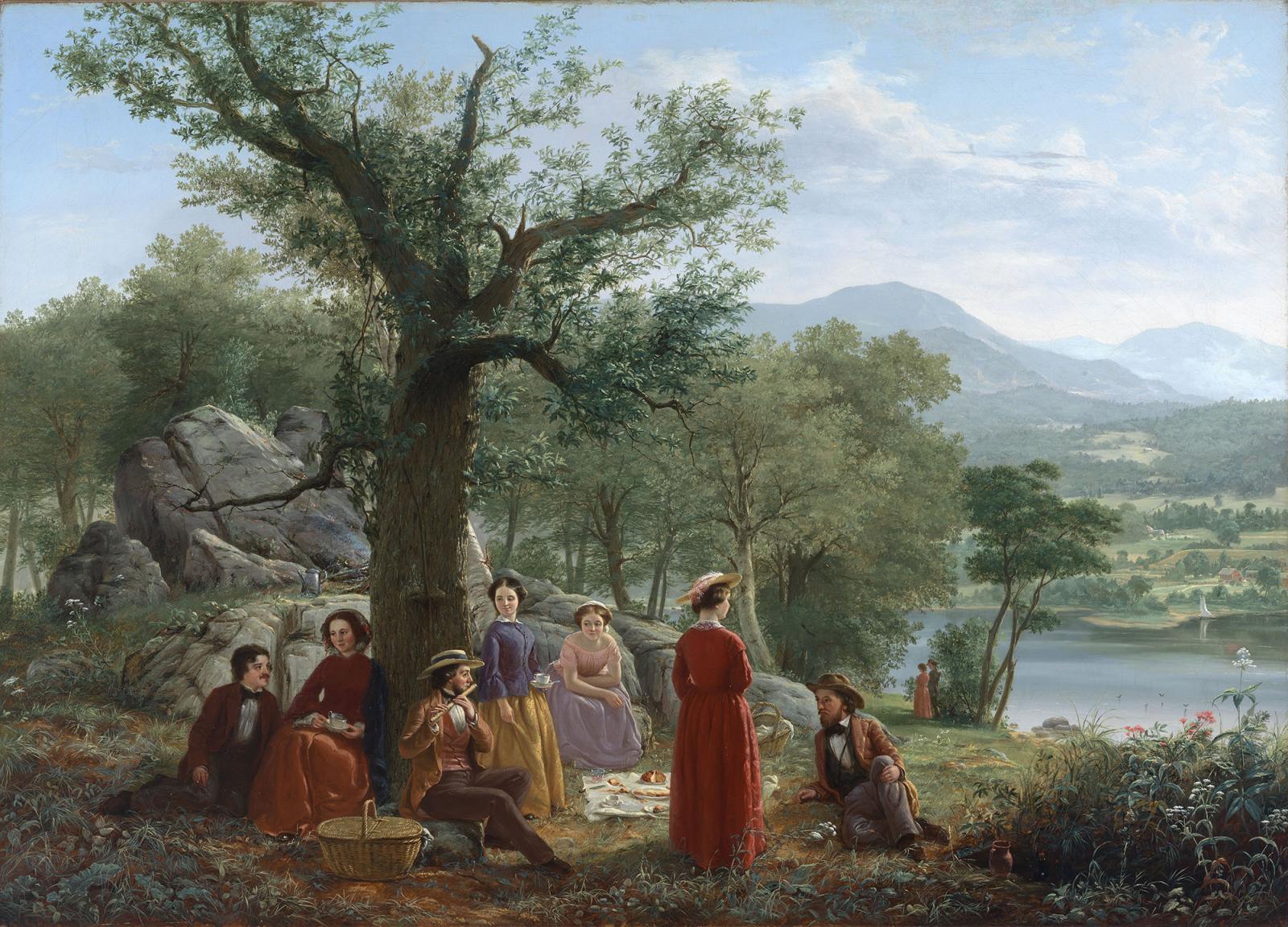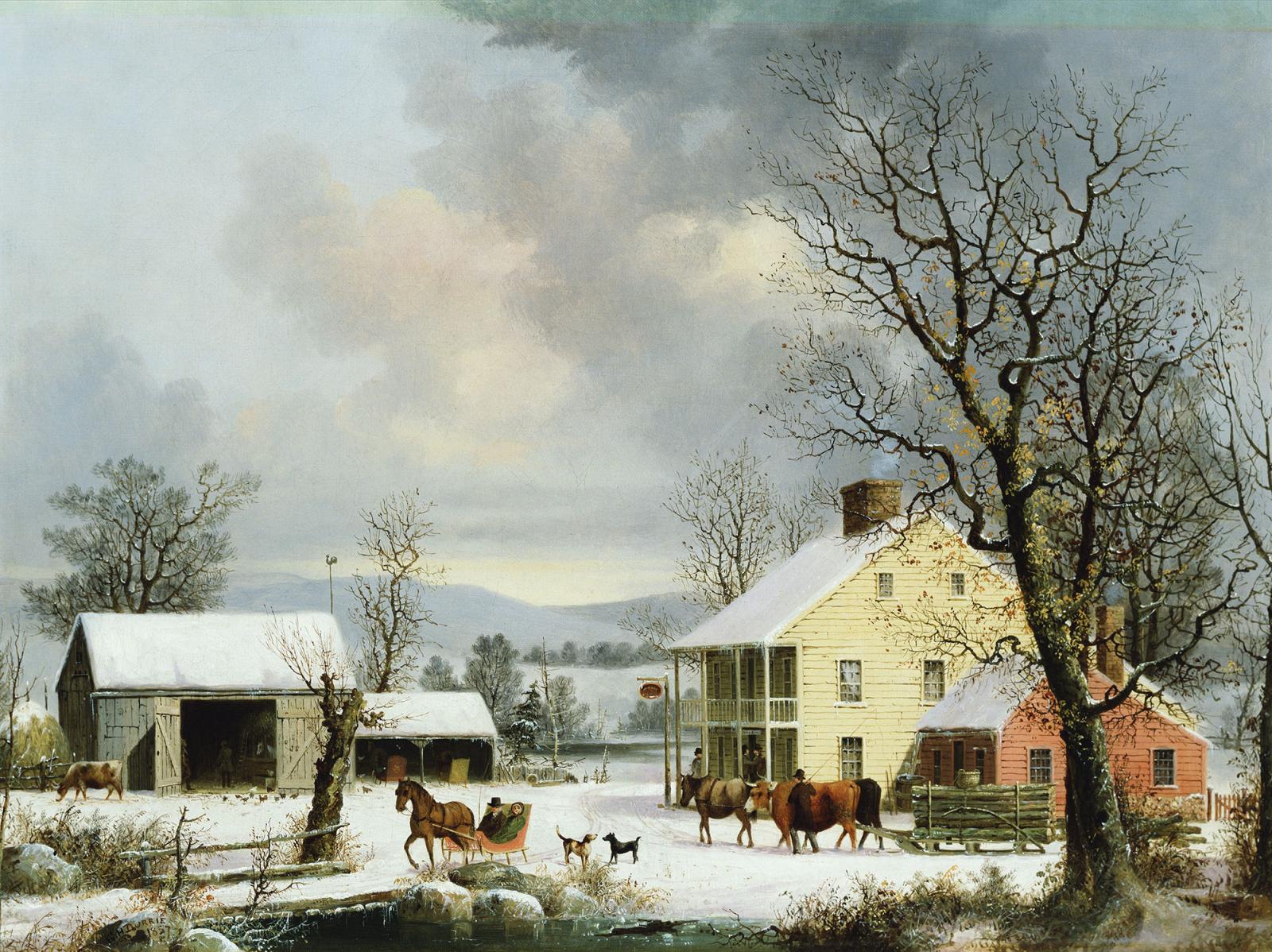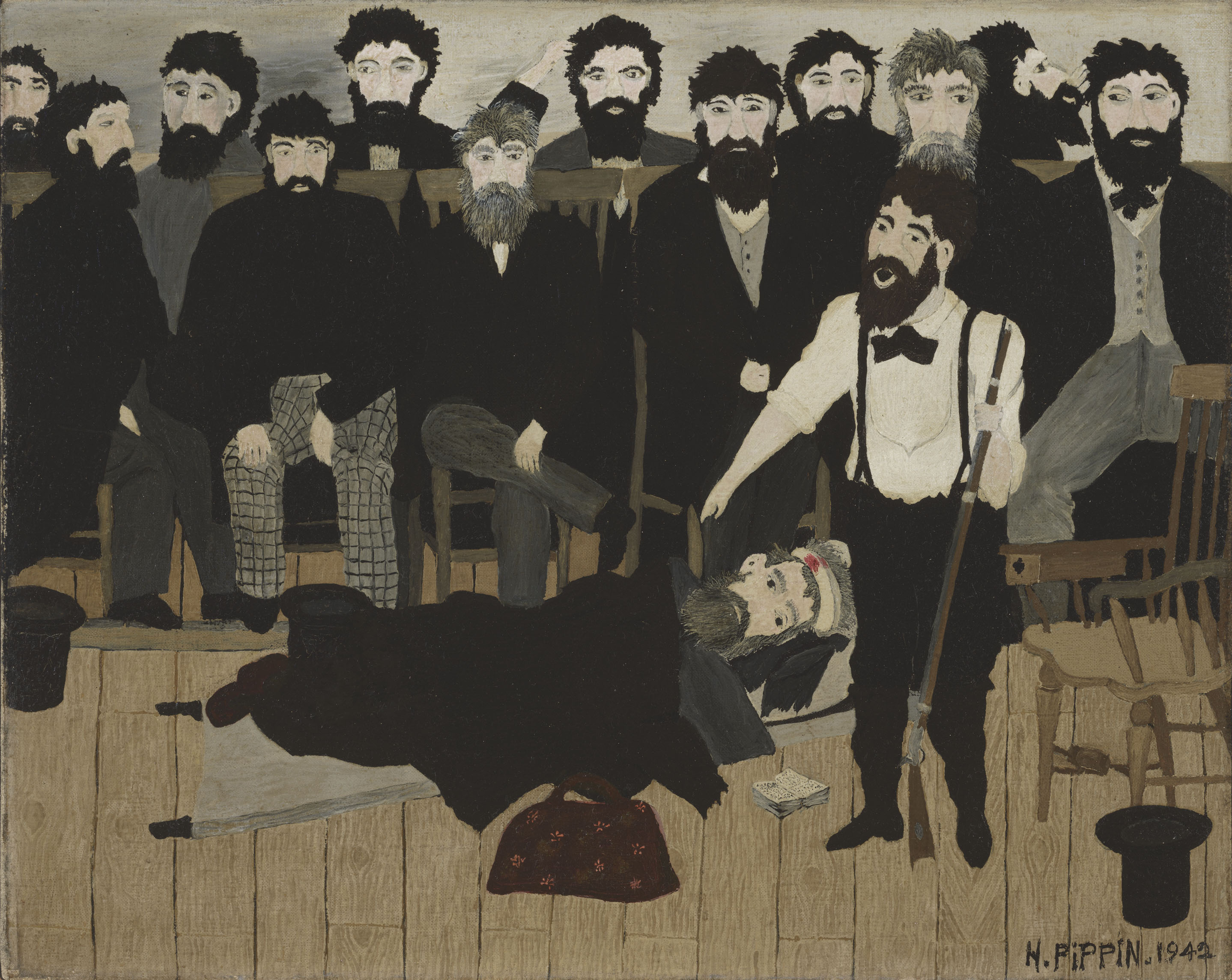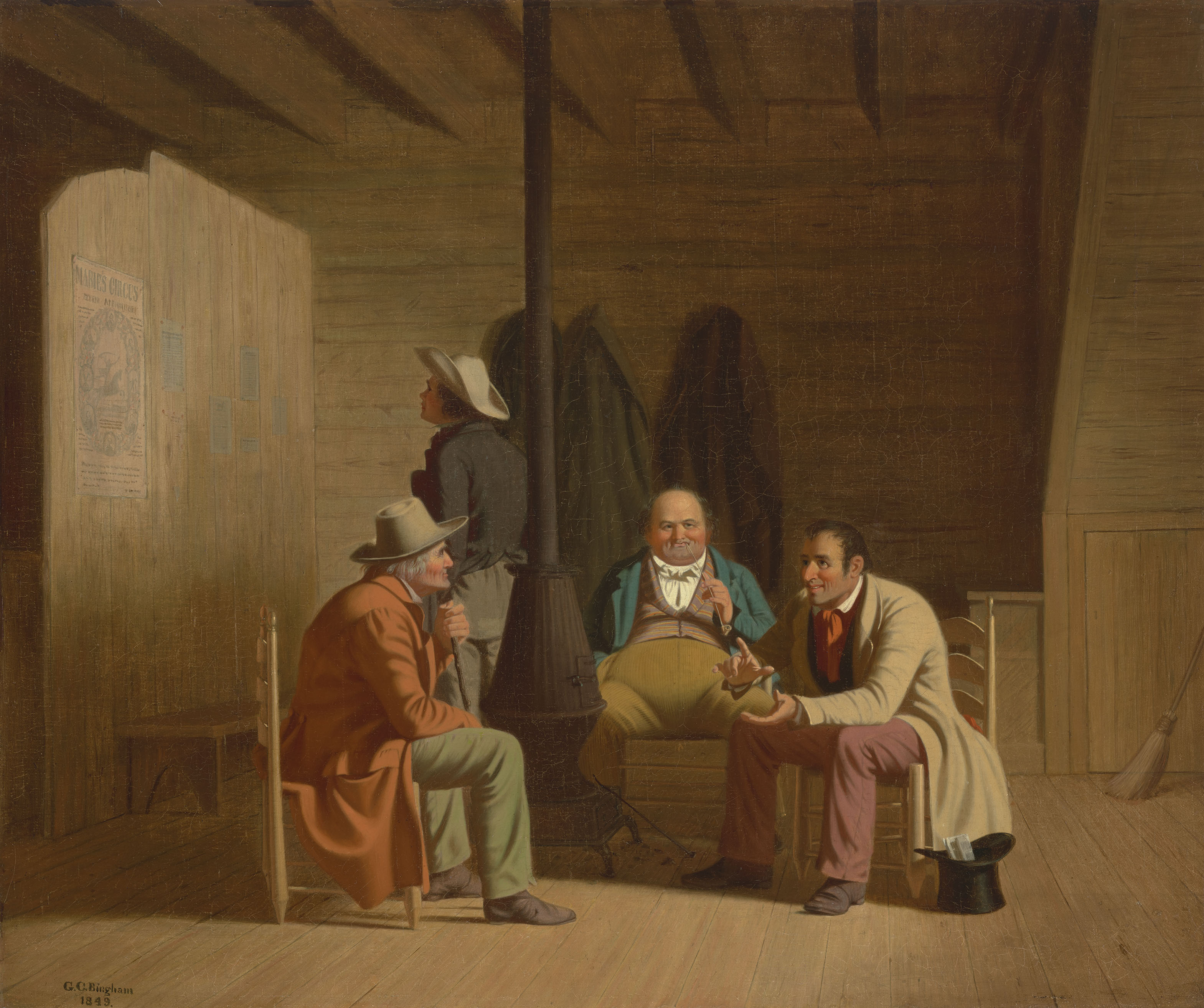Recreation

What makes you nostalgic?
This painting shows a group of picnickers near Mount Mansfield, the highest peak in Vermont. In the mid-19th century, rapid industrialization began to replace the agrarian lifestyle that had historically defined American life. Rural sightseeing, mountain hikes, and pastoral picnics—or images of these activities—provided idealized encounters with nature for city dwellers seeking a respite from the toil and troubles of city life.



